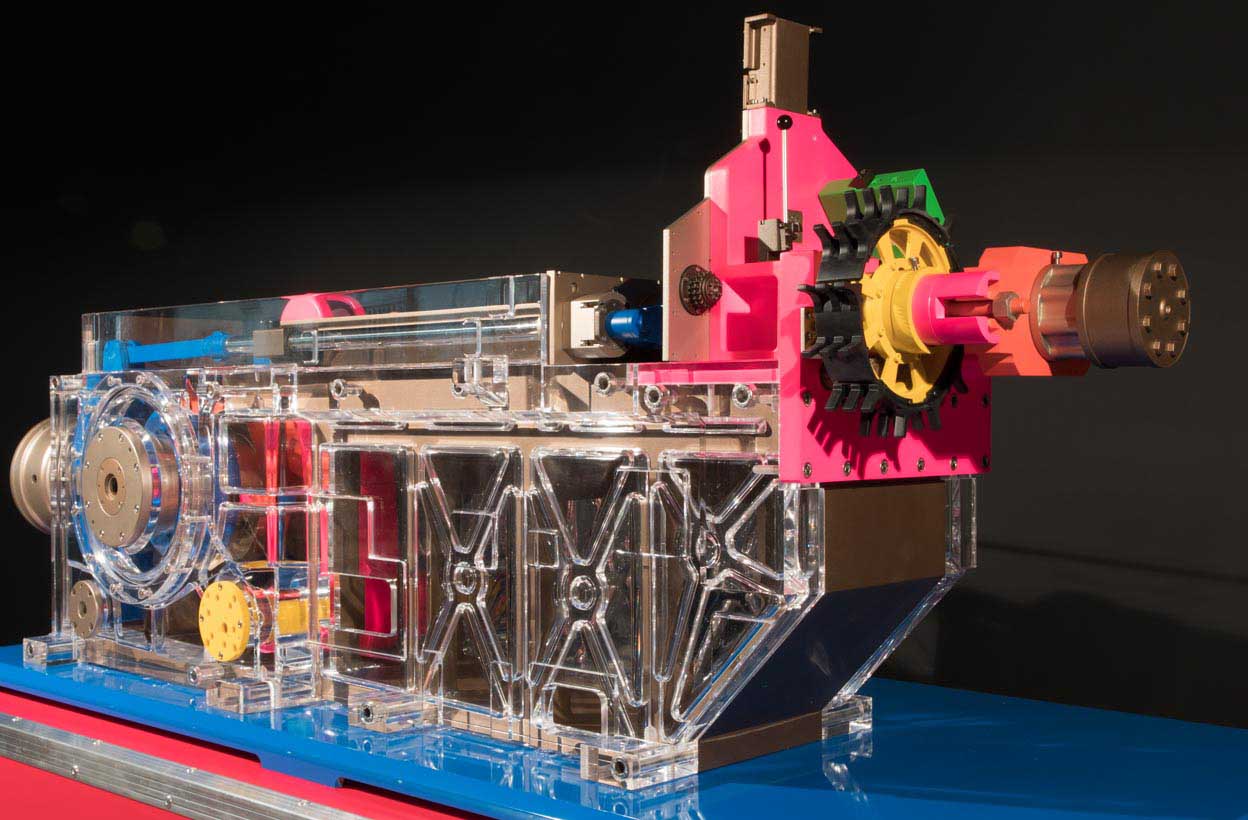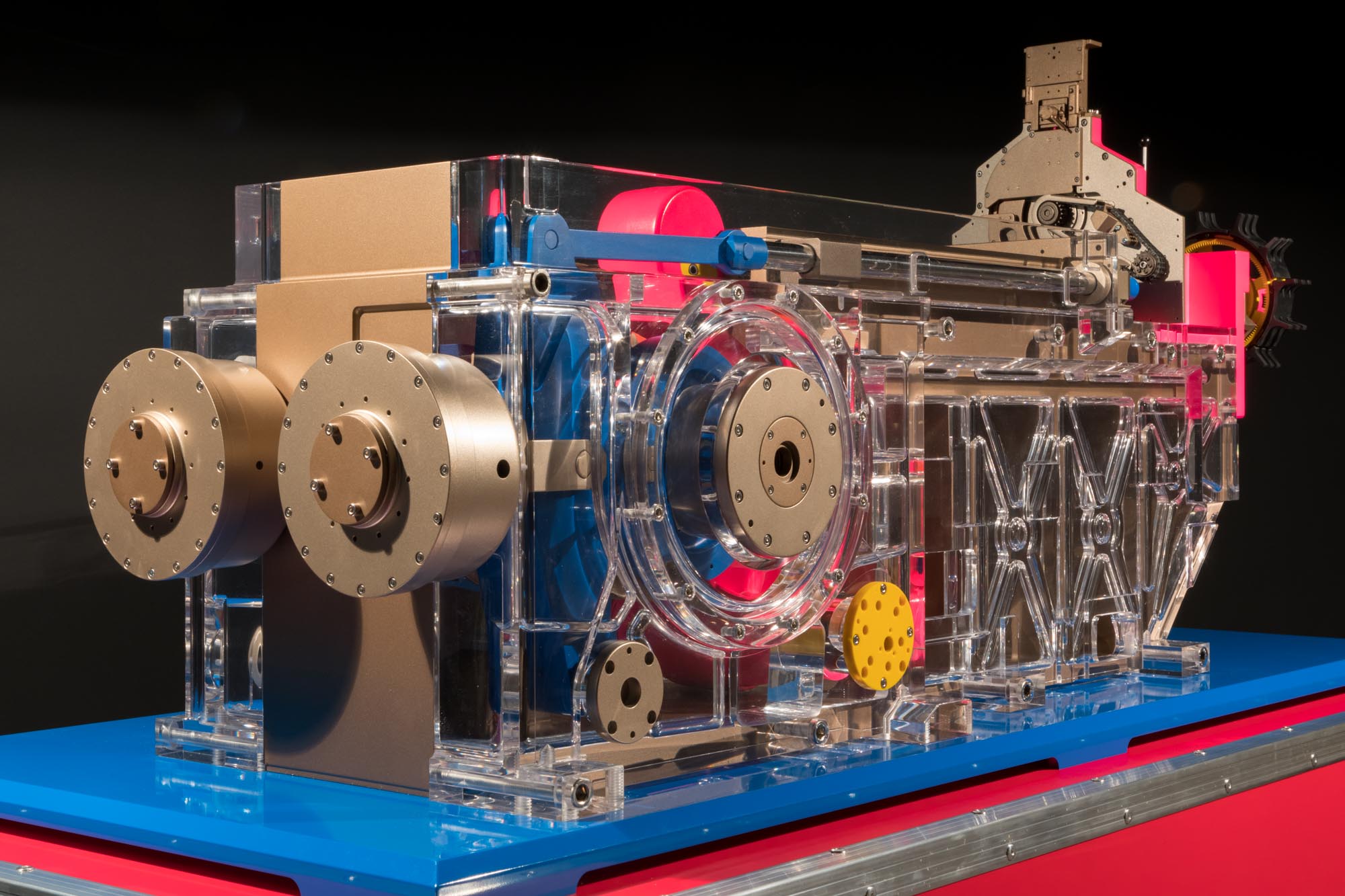Scale Model – Can Making Machine
From scale presentation models and exhibition models to prototypes parts MNL have the technology to help you
“Can Making Machine” – Exhibition Display Model
When approached by a leading supplier of machines that produce canning/food machinery, we were asked to produce a 3D printed exhibition model not only to produce a scale model of a machine but to also make it semi-function. The Third-Scale model was to represent a 4-metre long canning machine. It was to be able to demonstrate the unique selling points of the machine at a forthcoming trade show in Europe. With so many moving parts, the accuracy of the process and model were imperative.
The primary stage for MNL was to work on the 3D CAD data, when you scale a model down to such a small scale factor some elements can be lost – made so small they disappear, these would then need to be scaled at a different factor. Even simple nuts and bolts had to be re-drawn. As an example, a half-inch thread at 1/3 scale becomes 1/6th inch. this had to be altered to the nearest metric equivalent to prevent the necessity of producing non-standard bolts. Over 200 man-hours were spent working with the CAD, MNL wanted to ensure that what was produced or rectified was correct so many 3D PFS was created to show the end customer the design intent. As many sub-assemblies were to operate (albeit manually), once again MNL turned to the CAD to communicate with the customer, illustrating which assemblies moved, and be what extent. Animated movies were produced and sent to the customer to once again demonstrate the intended movements of the model.
Once 3D data was approved the manufacturing processes started. Many larger components were CNC machined from ABS for accuracy, strength and durability. Some components were produced via SLS, whilst the rubber items were made from silicon tooling. The chain was made in one assembly by connex machinery.
Vibrant colours were used to draw attention to the model at the trade show. The different colours illustrated the various areas and USPs of the design and function of the machine. MNL suggested having the sides of the model in clear acrylic to show internal components and how they function.
Once the model was completed a purpose-built plinth and flight case were produced so the model could be shipped worldwide without the worry of it getting damaged. Then to finally finish the model a Perspex cover was produced.
3D Printed Exhibition Model
Interested in learning more about how we can help?
Got a project we could help with this minute?Upload your files for quotation here...
Get Quote

